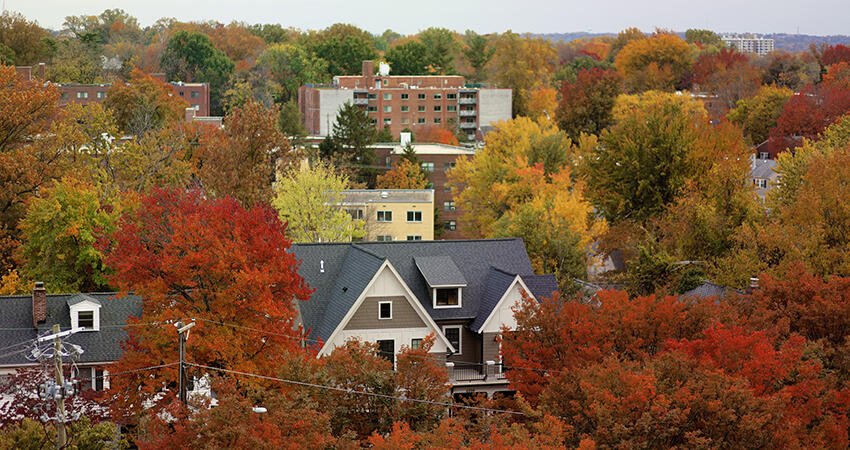
Housing Diversity Makes Communities More Resilient against Economic Downturns
- Title:
- Housing Diversity Makes Communities More Resilient against Economic Downturns
- Author:
-
Arnab Chakraborty, University of Illinois, and Andrew McMillan, University of Maryland
- Source:
- Publication Date:
-
2018
Past research has shown that neighborhoods with diverse housing types (i.e., a mix of single-family homes, duplexes, small and large multifamily buildings, and so on) can also promote racial and income diversity. This study posits that communities with a broad range of housing types and prices provide another benefit: greater stability in the face of a housing market downturn like the foreclosure crisis. Specifically, researchers sought to understand the connection between housing diversity in a community and the rate of home foreclosures and sales before and after the foreclosure crisis.
To conduct the study, researchers created a unique dataset that tracked zoning and foreclosures in 14 metropolitan statistical areas (MSAs) across the United States. They selected MSAs that had the best available zoning and population data, experienced positive population growth or historically supply-constrained housing markets, and were located in the Northeast, South, Midwest, and West to obtain geographic diversity. Their dataset includes zoning data for all incorporated areas in an MSA, and the researchers categorized zoning designations as high density (more than eight units per acre), low density (one to eight units per acre), and very low density (less than one unit per acre). Researchers used this information to create two housing indexes, both of which estimate the heterogeneity of an area. The zoning restrictiveness index captures the mix of allowable zoning, and the housing diversity index captures the mix of existing housing stock. To create these indexes, they classified housing units into six types based on US Census Bureau definitions: single-family detached units, single-family attached units, small multifamily (two to four units), large multifamily (five or more units), mobile homes, and all others. The dataset also includes nine years of foreclosures and sales data from the first quarter of 2005 through the fourth quarter of 2013. The researchers controlled for factors commonly associated with foreclosure, including population growth rate, percentage of Black and Hispanic* residents, population density, median household income, median rent, mortgage rate, vacancy rate, and poverty rate.
Key findings
- Neighborhoods with less housing diversity (higher housing diversity index or existing housing) have higher foreclosure and sales rates.
- The statistical significance and direction of the association between foreclosure and sales rates and restrictive zoning varies by statistical model and by region.
- A lack of housing diversity is associated with higher foreclosure and sales rates, but the share of borrowers, the share of Hispanic residents, and vacancy rate are stronger drivers of both foreclosure and sales rates.
- More sprawling census tracts, as characterized by development density, land-use mix, population and employment centers, and street accessibility, had higher rates of foreclosure.
Policy implications
- As the authors state, most policies aimed at addressing foreclosures are reactive. This research provides planners with new insights about the importance of community diversity and how proactive planning measures could stave off negative effects during an economic downturn.
- Traditionally, planners call for housing diversity at a jurisdictional level, but this study highlights the importance of housing diversity at the neighborhood level. As the authors posit, an argument about the benefits of housing diversity on financial stability could appeal to homeowners concerned about the impact of new development on their property values.
*The Housing Matters editorial team chose the term “Hispanic” in alignment with the authors of the study, which built on census data with self-reported race and ethnicity.
Photo by Nicole Glass Photography


